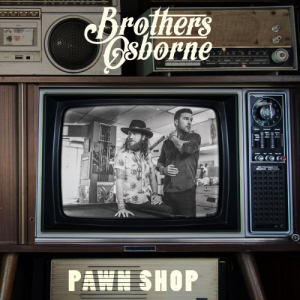Osborne Brothers - Pawn Shop '2016
24bit

| Artist | Osborne Brothers Related artists |
| Album name | Pawn Shop |
| Country | |
| Date | 2016 |
| Genre | Country |
| Play time | 00:39:11 |
| Format / Bitrate | 24 BIT Stereo 1420 Kbps / 44.1 kHz |
| Media | CD |
| Size | 93 / 268 / 461 mb |
| Price | Download $3.95 |
Order this album and it will be available for purchase and further download within 12 hours
Pre-order album Tracks list
Tracks list
Tracklist 01. Dirt Rich 02. 21 Summer 03. Stay A Little Longer 04. Pawn Shop 05. Rum 06. Loving Me Back [feat. Lee Ann Womack] 07. American Crazy 08. Greener Pastures 09. Down Home 10. Heart Shaped Locket 11. It Aint My Fault The Osborne Brothers were one of the most popular and innovative bluegrass groups of the post-war era, taking the music into new directions and gaining a large audience. Among their most notable achievements are their pioneering, inventive use of amplification, twin harmony banjos, steel guitars, and drums -- they were the first bluegrass group to expand the genres sonic palette in such a fashion. Bobby and Sonny Osborne were born in Hyden, KY, but raised in Dayton, OH. As children, their father instilled a love for traditional music. Bobby picked up the electric guitar as a teenager, playing in various local bands. A few years after his brother began playing the guitar, Sonny picked up the banjo. In 1949, Bobby formed a duo with banjoist Larry Richardson. The pair was hired by a West Virginian radio station and stayed in the state for a while, eventually hooking up with the Lonesome Pine Fiddlers. During their stay with the Fiddlers, they helped change the groups sound to bluegrass and made four singles for Cozy Records. Bobby Osborne left the band in the summer of 1951, forming a band with Jimmy Martin that fell apart shortly after its inception. After making a one-shot single, New Freedom Bell, with his siblings Louise and Sonny, he joined the Stanley Brothers for a short while before being drafted into the Army. Sonny spent some time with Bill Monroes Blue Grass Boys in the early 50s, appearing on several sides on Decca Records. He also cut some covers of popular Monroe and Flatt & Scruggs songs for the budget label Gateway. After Bobby returned from the Army, he and Sonny formed a band. Initially, they supported Jimmy Martin on his RCA session while they had their own spot on a Knoxville radio station. In 1956, they joined the Wheeling Jamboree; they would stay with the radio program for four years. In March of that year, Red Allen joined the brothers -- four months after his arrival, they recorded their first session for MGM Records. For the next year, they toured and recorded, steadily gaining a large audience. In the spring of 1958, Once More became a number 13 hit on the country charts. Its success helped push the band into the mainstream. Shortly after the success of Once More, Allen left the band, and the Osbornes filled his vacancy with a string of musicians and vocalists, including Johnny Dacus and Benny Birchfield. The duo stayed with the Wheeling Jamboree and MGM Records into the early 60s. The Osbornes became the first bluegrass act to play a college campus in 1960, when they played Antioch College in Yellow Springs, OH. That appearance ushered in a new era for bluegrass, creating a new, younger audience for the music. The Osbornes left MGM in 1963, signing with Decca Records. On their mid-60s records for Decca, the duo began experimenting more with their music, adding piano, steel guitar, and electric instruments to their music. Their adventurousness made them more accessible to a mass audience, as their string of late-60s and early-70s hit singles proves. Although their experimentation angered many bluegrass traditionalists, the Osbornes were the only bluegrass group to consistently have country hits during this time, even if all their singles were only minor hits. In 1975, the Osbornes left Decca but continued to play the Grand Ole Opry and bluegrass festivals across America. Later in the 70s, the duo returned to a more traditional sound. Throughout the 80s and 90s they stuck to this sound, playing concerts and festivals frequently and recording albums for CMH, RCA, Sugar Hill, and Pinecastle. Forty years after their formation, the Osborne Brothers remained an active act in the mid-90s.
